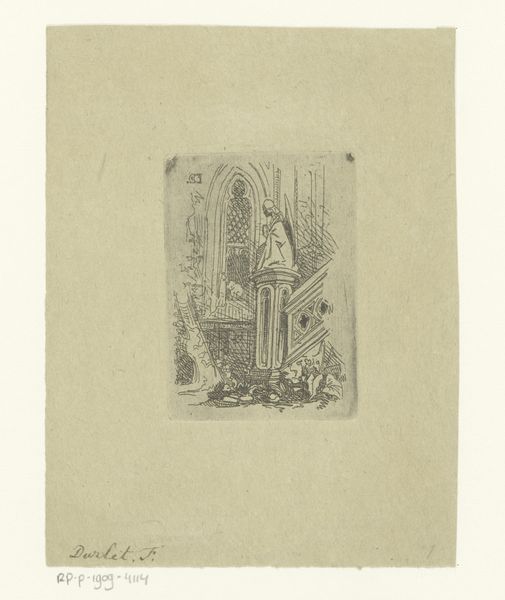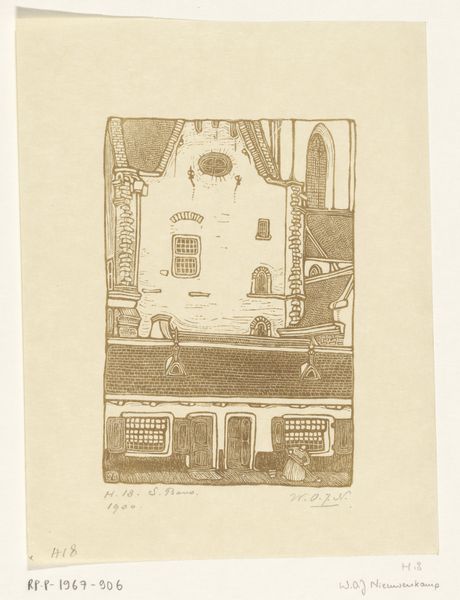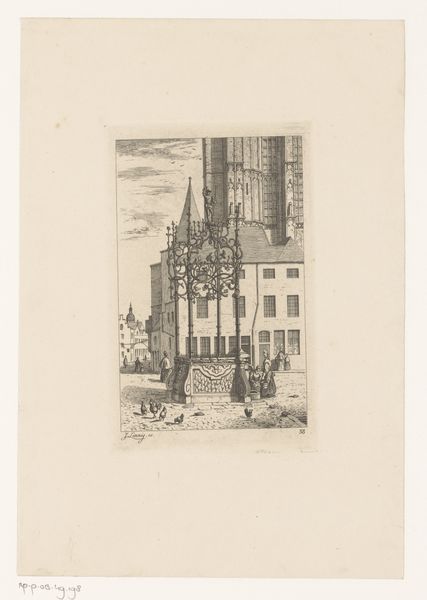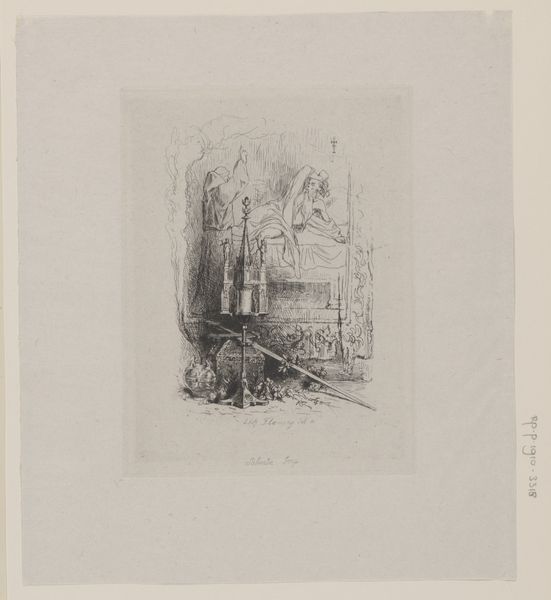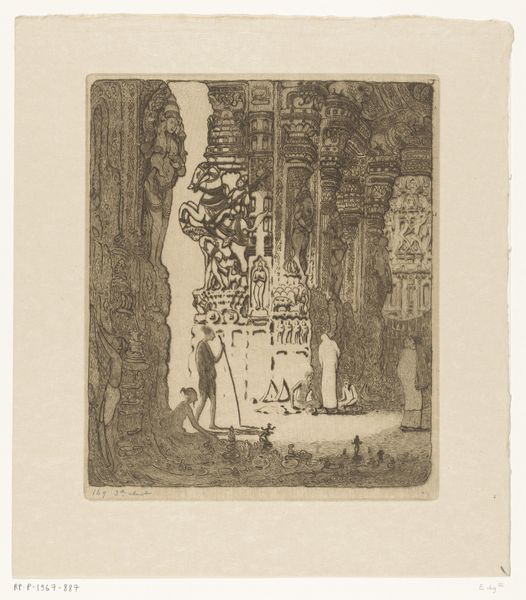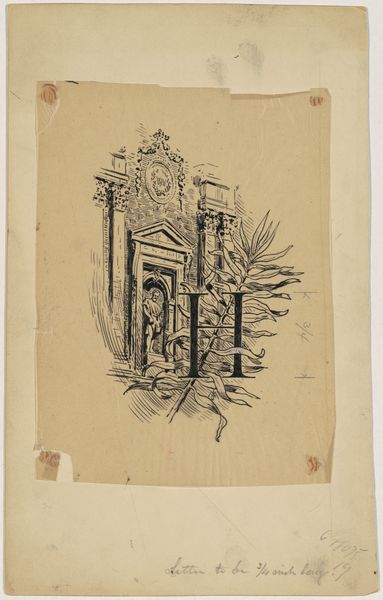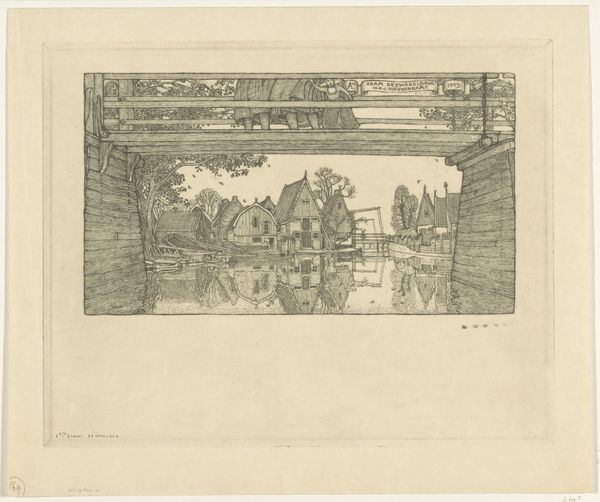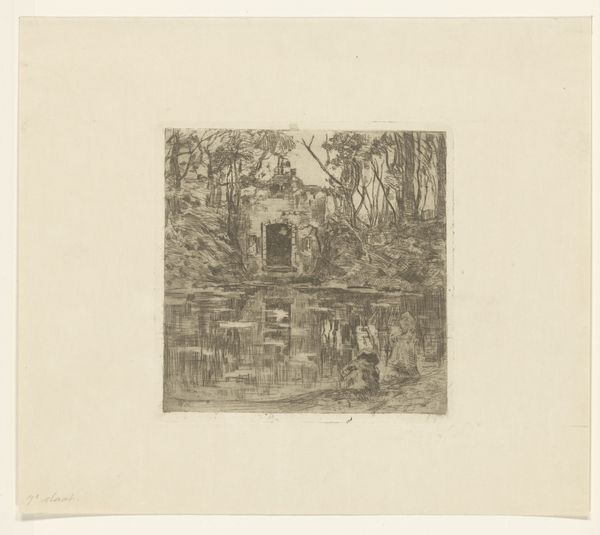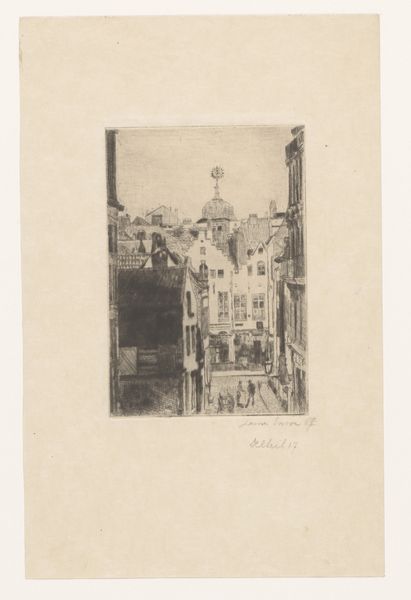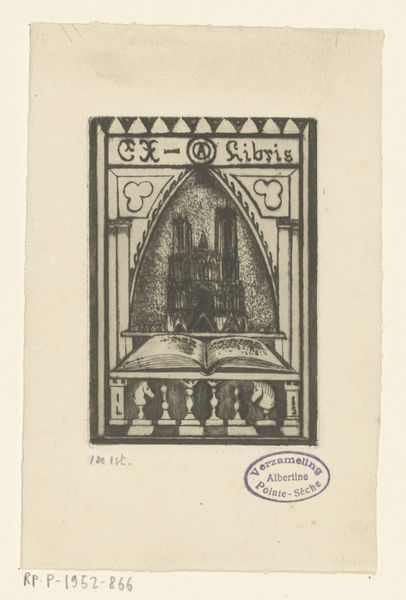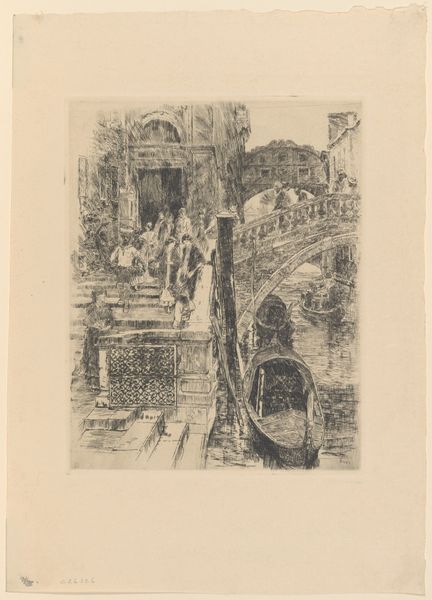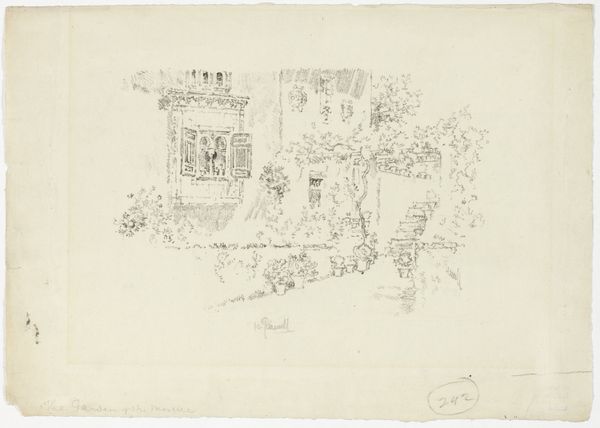
Vrouw in klederdracht die op een voordeur klopt in Edam Possibly 1914 - 1918
0:00
0:00
drawing, paper, pen
#
drawing
#
art-nouveau
#
landscape
#
paper
#
pen work
#
sketchbook drawing
#
pen
#
genre-painting
Dimensions: height 220 mm, width 246
Copyright: Rijks Museum: Open Domain
Editor: This pen drawing by Wijnand Otto Jan Nieuwenkamp, titled "Vrouw in klederdracht die op een voordeur klopt in Edam," possibly made between 1914 and 1918, has a curious, almost dreamlike quality. What’s your read on it? Curator: The image is indeed interesting, especially when considering the sociopolitical landscape around that time. Nieuwenkamp's choice to depict a traditional scene like this, a woman in traditional garb knocking on a door in Edam, may be more than just a simple genre painting. It comes at a time when traditional cultures in Europe were being rapidly transformed by industrialization and, of course, by the Great War. Does the idealized image offer some kind of visual escape? Editor: So, are you suggesting that Nieuwenkamp is subtly commenting on the changes happening around him? Curator: Possibly. We must also remember the Art Nouveau influences in the drawing style. The delicate pen work, almost illustrative, presents a curated vision of Dutch life, which might subtly respond to or even resist the growing sense of chaos in the world at the time. Consider how these images circulate. Did they reinforce a certain idea of Dutch identity during times of intense social upheaval? Editor: It's interesting how a seemingly simple genre scene can be interpreted within a much broader socio-political context. The very act of depicting and preserving tradition becomes a statement. Curator: Exactly. It challenges us to think about the purpose and public role of art. How artists responded to their contemporary moment and what kinds of meanings viewers may have then and now attached to works such as these. The sketchbook style feels intimate and also carefully studied. Editor: This perspective shifts my understanding considerably. It encourages looking beyond the image itself and into the socio-cultural forces at play. Curator: Precisely. It helps us explore the visual and social politics embedded in everyday imagery.
Comments
No comments
Be the first to comment and join the conversation on the ultimate creative platform.
